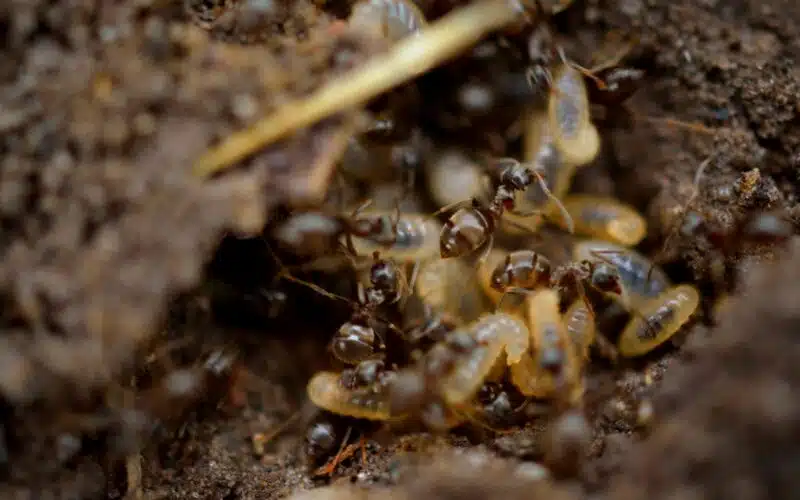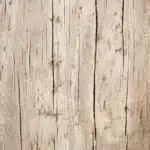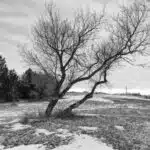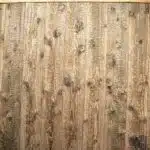Termites can be a tree’s worst enemy, eating away at its core like a slow-acting poison. If your tree is infested with termites, don’t panic. There are several steps you can take to treat the tree and protect it from further damage.
With the right knowledge and care, you can help your tree fight off these pesky critters and grow strong and healthy again. In this article, you’ll learn how to treat a tree with termites in a few simple steps.
Identify the Problem
Identify the problem quickly.
You need to quickly identify what kind of problem is eating away at your woody friend, like a hungry caterpillar.
Look for small holes and sawdust.
To determine if your tree is suffering from termites, look for small holes in the bark and fine sawdust-like materials near the base of the tree.
Contact a professional for help.
If you can’t determine the problem yourself, contact a professional to have them assess the tree and diagnose the problem.
Check for soft and spongy bark.
Another sign of termite infestation is if the bark of the tree is soft and spongy when touched, or if there are small tunnels within the bark.
Wilting leaves are a bad sign.
Additionally, termites can cause leaves to wilt and die prematurely, so look for signs of wilting leaves.
Watch for unstable ground.
If the ground around the tree is loose and appears to be sinking, it is likely that the termites have caused the ground to become unstable.
Look for soil mounds.
Additionally, there may be small mounds of soil around the base of the tree, another sign of termite infestation.
Get professional help if in doubt.
If you have any doubts as to whether or not the tree is infested with termites, it’s best to contact a certified arborist or pest control professional.
Proper treatment is important.
Without proper treatment, the tree can be severely weakened, leading to increased risk of breakage or even death.
Stay vigilant.
With the help of a professional, you can ensure your tree is healthy and safe from termites. Moving forward, it’s important to be vigilant and keep an eye out for any potential signs of termite activity.
Contact a Professional
Reach out to a licensed professional if you want to figure out the best way to handle the termite problem in your tree. A professional arborist can provide you with the best advice on how to treat the termite infestation, as well as other tree-related concerns that you may have.
Here are 4 reasons why you should contact a professional for help:
- They’re knowledgeable in tree diseases and pests, such as termites.
- They can help you identify the species of termite, and provide a plan of action to help you get rid of them.
- They can assess the overall health of the tree and provide strategies to minimize the damage that the termites may have caused.
- They can advise you on the proper use of insecticides and other methods to effectively eliminate the termite infestation.
In addition to treating the termite problem, a professional arborist can provide you with advice on how to maintain a healthy tree. They can even suggest methods to help strengthen the tree’s defenses against future termite infestations.
With their help, you can ensure that your tree remains healthy and free of termites. Moving forward, you can then take steps to remove the infested wood and prevent future infestations.
Remove the infested wood
Once the termites have been dealt with, it’s time to get rid of the infested wood for good, so you won’t have to worry about them coming back again. The best way to do this is to carefully remove all of the wood that has been affected by the termites.
This might mean that you have to remove entire sections of the tree, as termites can cause significant damage in a short amount of time. It is important to make sure that all of the infected wood is removed, as any remaining pieces could act as a breeding ground for more termites.
Removing the infested wood can be a difficult and time-consuming task. It’s important to be careful when doing this, as the tree might be fragile and you don’t want to cause any additional damage. You should also take the time to inspect the tree for any other signs of damage or infestation.
If you find any additional signs, it’s important to address them as quickly as possible to prevent the infestation from getting worse. Once the infested wood has been removed, it’s important to dispose of it properly. This could mean burning it, burying it, or taking it to a landfill.
If you choose to burn it, make sure that you do so in a safe and responsible manner. By taking the time to properly and thoroughly remove the infested wood, you can ensure that the termites won’t come back and you can keep your tree healthy.
Moving forward, the next step is to treat the tree with insecticides.
Treat the tree with insecticides
After disposing of the infested wood, it’s time to take the next step in protecting the tree from further termite damage – treating it with insecticides. Insecticides come in a variety of forms and can be used to effectively target and eliminate termites. Here are four things to consider when treating a tree with insecticides:
- Choose the right type of insecticide. There are many different types of insecticides, so it’s important to choose one that’s specifically designed to target and kill termites.
- Follow the application instructions carefully. Insecticides usually come with detailed instructions on how to apply them correctly and safely. Make sure to follow these instructions carefully to ensure the best results.
- Monitor the tree for signs of termite activity. After applying the insecticide, it’s important to monitor the tree for signs of termite activity. If any signs are detected, the insecticide may need to be reapplied.
- Seek professional help if needed. If the problem persists, it may be best to seek professional help from a certified arborist or pest control specialist.
Once the insecticide treatment is complete, the next step is to prune away any dead or dying branches. This will help to reduce the risk of termites spreading to other parts of the tree. Pruning away dead or dying branches can also help to improve the tree’s overall health and appearance. Additionally, removing these branches can help to protect the tree from further damage by providing more air circulation and sunlight exposure.
Prune dead or dying branches
Pruning away any dead or dying branches is essential in order to protect the tree from further damage and reduce the risk of termites spreading to other parts of the tree. Start by inspecting the tree for any visible signs of termites, such as mud tubes, hollowed wood, or wings from termite swarms.
Pruning any dead or dying branches can help reduce the spread of termites. Be sure to use sharp, clean shears and prune away any branches that may have been infected by termites. This will help reduce the risk of termites spreading to other areas of the tree.
Once the dead and dying branches have been removed, it is important to inspect the tree for any other signs of termite damage. Look for any signs of frass, which are sawdust-like droppings that can indicate a termite infestation. Also, check for any holes or tunnels in the wood, or for any wings that may have been left by termite swarms. If any of these signs of termite damage are found, contact a professional to assess the situation and determine the best approach for treating the tree.
Improving soil drainage around the tree can also help reduce the risk of termites. Make sure the soil around the tree is well-drained and aerated, and add plenty of organic matter to the soil. This will help to reduce the risk of waterlogging, which can attract termites to the tree.
Additionally, it is important to monitor the tree regularly for any signs of termite activity. By regularly inspecting the tree, you can quickly spot any signs of termite damage and take the necessary steps to treat the tree. With proper pruning and maintenance, you can protect the tree from termites and ensure its long-term health. To improve soil drainage around the tree and reduce the risk of termites, contact a professional for advice.
Improve soil drainage
Improving soil drainage around the tree is key to preventing termite infestations and keeping the tree healthy. The best way to improve the soil drainage is to till the soil around the tree. This will help loosen the soil and allow water to move through it more easily.
In addition, adding organic matter such as compost can help improve the drainage and also provide vital nutrients to the tree. To ensure that the organic matter is thoroughly mixed in with the soil, it should be tilled in.
It’s also important to remove any debris that may be blocking the soil and preventing water from draining properly. This includes fallen leaves, sticks, and other material that can trap moisture. If the debris is not removed, it can create a humid environment that termites will find attractive.
In addition to improving drainage, it’s also important to make sure the tree is getting adequate water and that the soil is not overly saturated. This can be done by regularly checking the soil for signs of moisture and watering the tree as needed. This will ensure the tree has access to the water it needs without being overly saturated.
Taking these steps to improve soil drainage and reduce moisture and humidity levels can help keep a tree healthy and free of termites.
Reduce moisture and humidity levels
Reducing moisture and humidity levels around the tree is key to keeping the pest away and keeping the tree in tip-top shape, so it’s important to stay on top of it – don’t let it slip through the cracks!
This can be done by ensuring that water is not pooling around the base of the tree. If possible, try to direct water away from the tree, either with a trench or a French drain. Additionally, if the tree is in an area that receives a lot of rain, consider using a tarp or similar material to cover the tree and reduce the amount of water that it is exposed to.
It’s also important to keep an eye on the humidity levels. This can be done by using a hygrometer to measure the humidity in the area around the tree. If the levels are too high, consider using a dehumidifier or other device to reduce the humidity.
Additionally, make sure to keep the area around the tree clear of any mulch or other organic debris, as this can act as a breeding ground for termites and other pests.
By following these steps, you can help reduce the moisture and humidity levels around the tree and, in turn, reduce the chance of termite infestation. Taking these actions now can help ensure that your tree stays healthy and pest-free for years to come.
To further protect the tree, it’s important to remove mulch and other organic debris from the area to prevent termite infestations.
Remove mulch and other organic debris
Removing mulch and other organic debris from around the tree is an easy way to help keep pests away and keep your tree looking its best! Here’s what you’ll need to do:
- Clear away any debris from around the trunk of the tree.
- Remove any mulch or other organic materials from the base of the tree.
- Cut away any tree branches that are touching the ground.
- Trim away any vegetation that is growing too close to the tree.
These steps will help to create space around the tree and let air flow freely. This will also reduce the number of places that pests can hide. Taking the time to remove mulch and other organic debris can help to make sure that termite infestations and other pests stay away.
It’s also important to seal any cracks or crevices in the tree bark or soil around the base of the tree. This will help keep termites from gaining access to the tree. Sealing these areas properly will help protect the tree from further damage and keep it healthy for many years to come.
Seal cracks and crevices around the tree
Sealing any gaps in the bark or soil around the base of the tree can help keep pesky critters out and keep your tree looking its best. Look for any cracks or crevices that could give termites access to the tree, and use a high-quality sealant to block their entry.
If your tree is located in a lawn or garden, you may need to dig around the base of the tree and fill in any gaps or holes in the soil. Make sure to use a sealant product specifically designed for outdoor use. Additionally, it’s a good idea to inspect the tree for any signs of termite activity, such as trails of sawdust, discarded wings, or termite tubes.
The second step in treating a tree with termites is to monitor the tree for future infestations. Even after you have sealed the tree, it’s still important to check for any signs of termite activity. This should be done at least once a month and can be done by inspecting the trunk and branches for termite tubes, holes, or other signs of damage.
Additionally, it’s a good idea to inspect the surrounding soil for termite activity and to remove any organic debris that could be providing termites with food and shelter.
Finally, it’s important to take preventive measures to keep termites away from the tree. This can include keeping the tree well-watered and fertilized, removing any dead or decaying branches, and keeping the area around the tree free of debris or organic matter. Additionally, you can use a termite-repelling product around the tree’s base to help deter termites from coming into contact with the tree.
By following these steps, you can help keep your tree safe from termite infestations.
Monitor the tree for future infestations
Checking for signs of future infestations is key, so inspect the trunk and branches at least once a month to make sure you don’t have any unwelcome visitors. Look for sawdust around the roots, or wood that looks like it’s been chewed on. Listen for any strange noises coming from inside the tree, such as rustling or clicking. If there’s a hollow spot, you might be able to see termites inside. If you find any evidence of termites, contact a pest control service as soon as possible.
It’s also important to check for other signs of damage, such as broken branches or cracked bark. These can be caused by many things, including weather, animals, and even disease. Pay attention to any changes in the tree’s appearance, such as wilting leaves or browning branches. If you notice any of these, it’s best to consult a tree care specialist to determine the cause and treatment.
Regularly monitoring the tree, both inside and out, is the best way to ensure that any infestations are caught early and can be treated effectively. Pay attention to any changes in the tree’s appearance and behavior, and be sure to inspect it closely on a monthly basis. This will give you the best chance of catching any termite infestations before they cause too much damage.
Conclusion
You’ve successfully treated your tree for termites! It’s important to remember that termites can return, so it’s important to continue to monitor your tree for future infestations.
Did you know that termites cause an estimated $5 billion in property damages each year? To prevent further damage, regularly inspect your tree for signs of termites, reduce moisture and humidity levels, and seal any cracks or crevices around the tree.
With the right knowledge and preventive steps, you can protect your tree and keep it healthy for years to come.














![How To Repair Rotted Wood 15 Texture : Altario Buick Estate Wagon : Rotting Faux Wood Paneling [1 of 2]](https://green-life.blog/wp-content/uploads/2023/05/z1CersK-gCjq-150x150.jpg.webp)














